Rahasia Sukses! 7 Fakta Mengejutkan tentang Transplantasi Alis
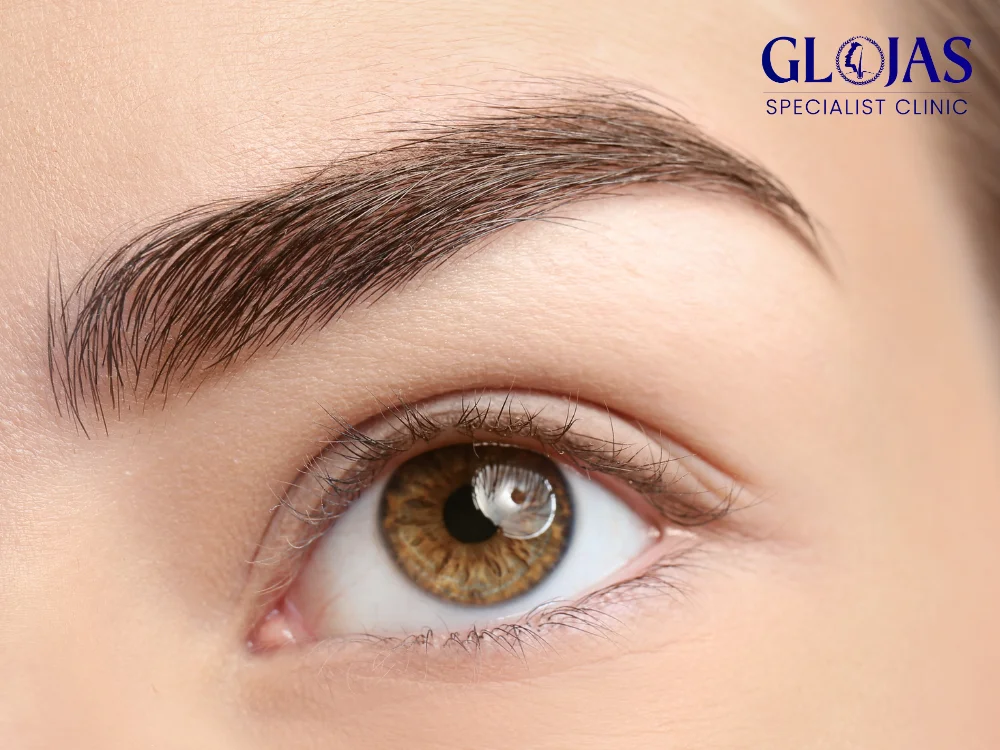
Transplantasi alis adalah prosedur medis untuk menanamkan folikel rambut ke area alis guna mendapatkan tampilan yang lebih tebal, rapi, dan natural. Teknik ini semakin populer karena memberikan hasil permanen dan terlihat alami dibandingkan metode lain seperti sulam alis atau penggunaan pensil alis. Mengapa Transplantasi Alis Semakin Populer? Banyak orang memilih transplantasi alis karena berbagai alasan, mulai dari kehilangan alis akibat faktor genetik, kecelakaan, atau kebiasaan mencabut alis berlebihan. Dengan teknik modern, transplantasi ini dapat memberikan hasil yang lebih tahan lama dan tidak memerlukan perawatan khusus seperti tato alis. Keuntungan Melakukan Transplantasi Alis Jika Anda masih ragu apakah prosedur ini tepat untuk Anda, berikut adalah beberapa keuntungan yang bisa Anda dapatkan: Hasil Permanen dan Alami Tidak seperti tato alis yang bisa memudar atau sulam alis yang harus diperbarui setiap beberapa tahun, transplantasi alis memberikan hasil permanen. Rambut yang ditanam berasal dari bagian tubuh Anda sendiri, sehingga tumbuh alami dan mengikuti pola pertumbuhan rambut asli. Minim Risiko Alergi Karena rambut yang digunakan berasal dari tubuh pasien sendiri, risiko alergi sangat minim. Ini membuat prosedur ini lebih aman dibandingkan dengan metode lain yang melibatkan penggunaan tinta atau bahan kimia. Bisa Dibentuk Sesuai Keinginan Dokter akan membantu Anda merancang bentuk alis yang sesuai dengan wajah dan preferensi pribadi Anda, sehingga hasilnya benar-benar personal dan sesuai keinginan. Proses Transplantasi Alis: Apa yang Harus Diketahui? Sebelum menjalani prosedur, penting untuk memahami langkah-langkah yang akan dilakukan. Konsultasi Awal Dokter akan mengevaluasi kondisi alis Anda dan menentukan apakah Anda kandidat yang cocok untuk prosedur ini. Pengambilan Folikel Rambut Biasanya, rambut diambil dari bagian belakang kepala karena memiliki tekstur yang mirip dengan alis. Implantasi ke Area Alis Setelah folikel diambil, dokter akan menanamkan satu per satu ke area alis sesuai dengan pola yang diinginkan. Masa Pemulihan Proses penyembuhan biasanya memakan waktu beberapa minggu, dan pasien harus menghindari menyentuh atau menggaruk area transplantasi agar folikel tetap dalam kondisi baik. Efek Samping dan Risiko yang Perlu Diketahui Seperti prosedur medis lainnya, transplantasi alis memiliki beberapa risiko yang perlu diperhatikan: Kemerahan dan bengkak pada area transplantasi (biasanya mereda dalam beberapa hari). Infeksi jika tidak dirawat dengan benar. Hasil yang tidak simetris jika prosedur dilakukan oleh dokter yang kurang berpengalaman. Namun, dengan memilih klinik dan dokter yang terpercaya, risiko ini bisa diminimalkan. Siapa yang Cocok untuk Transplantasi Alis? Tidak semua orang cocok untuk prosedur ini. Kandidat yang ideal biasanya: Memiliki alis tipis atau hampir tidak ada akibat faktor genetik atau trauma. Tidak memiliki riwayat penyakit kulit yang dapat memengaruhi pertumbuhan rambut. Bersedia menjalani proses penyembuhan dengan baik untuk mendapatkan hasil maksimal. Berapa Biaya Transplantasi Alis? Biaya transplantasi alis bervariasi tergantung pada faktor seperti lokasi klinik, pengalaman dokter, dan teknik yang digunakan. Rata-rata, prosedur ini bisa berkisar antara Rp10 juta hingga Rp30 juta, tergantung pada tingkat kesulitan dan kebutuhan pasien. Perbedaan Transplantasi Alis vs. Sulam Alis Banyak orang masih bingung antara transplantasi alis dan sulam alis. Berikut adalah perbedaan utamanya: Faktor Transplantasi Alis Sulam Alis Hasil Permanen Sementara (3-5 tahun) Teknik Menggunakan folikel rambut asli Menggunakan tinta atau pigmen Tampilan Lebih alami karena rambut asli tumbuh Bisa terlihat kurang alami jika warna tidak sesuai Perawatan Minimal setelah pemulihan Perlu retouch setiap beberapa tahun Harga Lebih mahal, tapi investasi jangka panjang Lebih murah, tapi perlu perawatan berkala Tips Merawat Alis Setelah Transplantasi Setelah menjalani transplantasi alis, Anda perlu merawatnya dengan benar agar hasilnya maksimal. Berikut beberapa tips penting: Hindari menyentuh area alis selama beberapa hari pertama. Gunakan krim antibiotik jika diresepkan dokter. Jangan terkena air secara langsung selama beberapa hari pertama. Hindari paparan sinar matahari berlebihan agar kulit tidak iritasi. FAQ tentang Transplantasi Alis 1. Apakah transplantasi alis sakit?Prosedur ini dilakukan dengan anestesi lokal, sehingga pasien tidak merasakan sakit selama operasi. Namun, setelah efek anestesi hilang, mungkin ada sedikit ketidaknyamanan yang bisa diatasi dengan obat pereda nyeri. 2. Berapa lama hasil transplantasi alis bisa terlihat?Biasanya, dalam 3-6 bulan rambut mulai tumbuh, dan hasil akhir dapat dilihat dalam waktu sekitar satu tahun setelah prosedur. 3. Apakah transplantasi alis memerlukan perawatan khusus?Tidak banyak perawatan khusus yang diperlukan, tetapi pasien mungkin perlu merapikan alis secara berkala karena rambut yang ditransplantasi memiliki pola pertumbuhan yang mirip dengan rambut kepala. 4. Bisakah transplantasi alis gagal?Meskipun jarang terjadi, kegagalan bisa terjadi jika folikel tidak tertanam dengan benar atau jika pasien tidak merawat area transplantasi dengan baik setelah prosedur. 5. Apakah transplantasi alis bisa dilakukan lebih dari sekali?Ya, dalam beberapa kasus, pasien bisa melakukan prosedur kedua jika hasil pertama kurang memuaskan atau jika ingin menambahkan kepadatan alis lebih lanjut. 6. Adakah efek samping jangka panjang dari transplantasi alis?Secara umum, tidak ada efek samping jangka panjang jika dilakukan dengan benar oleh dokter yang berpengalaman. Namun, beberapa pasien mungkin mengalami pertumbuhan rambut yang tidak seragam yang bisa diperbaiki dengan perawatan tambahan. Transplantasi alis adalah solusi sempurna bagi mereka yang ingin memiliki alis tebal dan natural secara permanen. Dengan memilih dokter yang berpengalaman dan mengikuti panduan perawatan dengan baik, Anda bisa mendapatkan hasil yang memuaskan dan meningkatkan rasa percaya diri
Fakta Mengejutkan! Tanam Rambut Harga dan Biaya yang Perlu Anda Ketahui
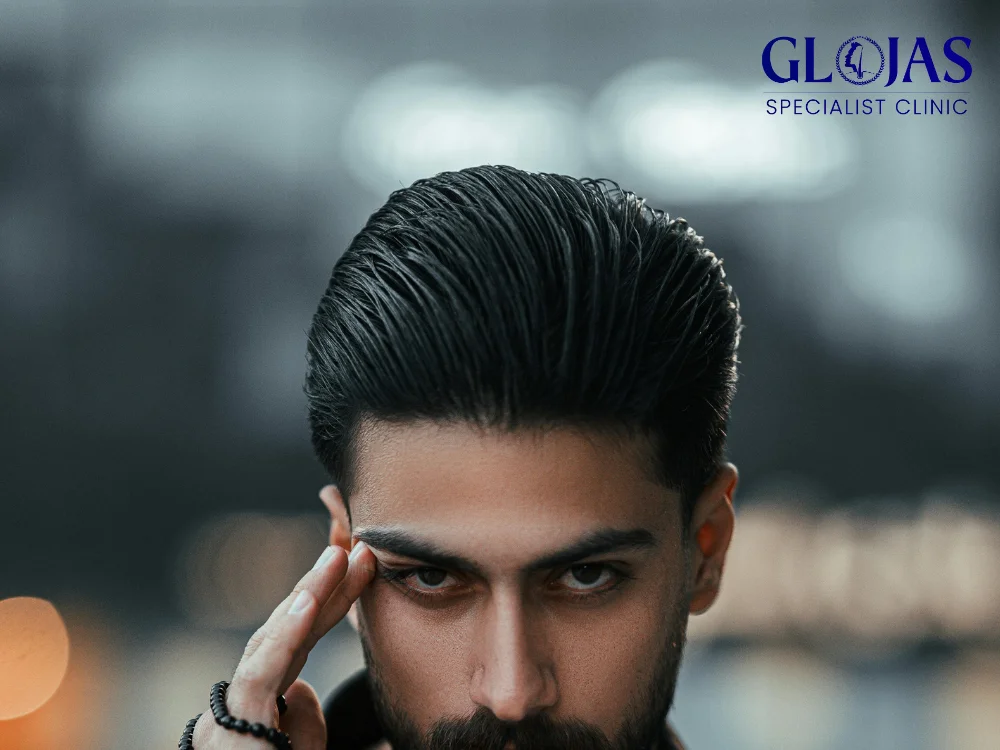
Tanam rambut menjadi solusi populer bagi mereka yang mengalami kebotakan atau penipisan rambut. Namun, banyak orang ragu untuk menjalani prosedur ini karena faktor biaya. Tanam rambut harga sangat bervariasi, tergantung pada metode yang digunakan, jumlah cangkok rambut, lokasi klinik, hingga pengalaman dokter spesialis. Jika Anda tertarik melakukan transplantasi rambut, penting untuk memahami berapa biaya tanam rambut dan apa saja yang mempengaruhi harganya. Artikel ini akan mengulas informasi lengkap seputar tanam rambut harga, termasuk teknik terbaik dan faktor yang menentukan biaya prosedur ini. Faktor yang Mempengaruhi Tanam Rambut Harga Metode Tanam Rambut yang Dipilih Terdapat beberapa teknik transplantasi rambut yang mempengaruhi biaya: 1. Follicular Unit Transplantation (FUT) Metode ini melibatkan pengangkatan sepotong kulit kepala yang mengandung folikel rambut dari bagian belakang kepala. Lebih terjangkau dibandingkan metode lainnya. Harga: Rp25 juta – Rp50 juta. 2. Follicular Unit Extraction (FUE) Teknik ini mengambil folikel rambut satu per satu lalu menanamkannya di area yang mengalami kebotakan. Minim bekas luka dan lebih alami. Harga: Rp30 juta – Rp75 juta. 3. Direct Hair Implantation (DHI) Metode yang lebih modern dengan alat khusus untuk menanamkan rambut tanpa membuat sayatan besar. Hasil lebih cepat dan alami. Harga: Rp40 juta – Rp100 juta. Jumlah Cangkok Rambut yang Diperlukan Semakin luas area kebotakan, semakin banyak folikel rambut yang dibutuhkan, sehingga biaya tanam rambut semakin tinggi. Jumlah Cangkok Rambut Kisaran Harga 1.000 – 2.000 cangkok Rp20 juta – Rp40 juta 2.000 – 3.500 cangkok Rp40 juta – Rp70 juta 4.000+ cangkok Rp70 juta – Rp100 juta+ Lokasi Klinik dan Reputasi Dokter Klinik di kota besar seperti Jakarta, Surabaya, dan Bandung biasanya menetapkan harga yang lebih tinggi dibanding klinik di daerah lain. Selain itu, dokter yang sudah berpengalaman dan memiliki reputasi baik juga mematok biaya lebih mahal. Lokasi Klinik Kisaran Harga Jakarta Rp30 juta – Rp100 juta Surabaya Rp25 juta – Rp80 juta Bandung Rp20 juta – Rp70 juta Luar Negeri (Turki, India) Rp15 juta – Rp50 juta Fasilitas dan Teknologi yang Digunakan Semakin modern fasilitas dan teknologi yang digunakan, semakin mahal biaya tanam rambut. Klinik yang menggunakan teknologi robotik atau alat DHI implan otomatis biasanya menawarkan harga yang lebih tinggi. Apakah Tanam Rambut Worth It? Bagi banyak orang, transplantasi rambut merupakan investasi jangka panjang yang memberikan hasil permanen. Dibandingkan dengan metode lain seperti hair spray, wig, atau obat penumbuh rambut, tanam rambut memiliki tingkat keberhasilan lebih tinggi. Kelebihan Tanam Rambut ✔️ Hasil alami dan permanen.✔️ Minim perawatan setelah prosedur.✔️ Meningkatkan kepercayaan diri secara signifikan. Kekurangan Tanam Rambut ❌ Biaya cukup mahal dibanding metode lain.❌ Membutuhkan waktu penyembuhan sekitar 3–6 bulan.❌ Hasil tidak langsung terlihat, butuh waktu hingga 12 bulan untuk pertumbuhan penuh. Alternatif Lebih Murah untuk Tanam Rambut Jika tanam rambut harga dirasa terlalu mahal, ada beberapa alternatif lain yang bisa dipertimbangkan: 1. Hair Fiber atau Serbuk Penebal Rambut Cocok untuk menutupi kebotakan ringan. Harga: Rp100 ribu – Rp500 ribu. Tidak permanen, harus diaplikasikan setiap hari. 2. Minoxidil dan Finasteride Obat yang membantu memperlambat kebotakan. Harga: Rp200 ribu – Rp1 juta per bulan. Hasil bervariasi, perlu pemakaian rutin. 3. Scalp Micropigmentation (SMP) Teknik tato rambut untuk menciptakan efek rambut lebih penuh. Harga: Rp5 juta – Rp20 juta. Tidak permanen, perlu retouch setiap beberapa tahun. Pertanyaan Umum tentang Tanam Rambut Harga 1. Berapa harga tanam rambut di Indonesia?Harga tanam rambut di Indonesia berkisar antara Rp20 juta – Rp100 juta, tergantung pada metode yang dipilih dan jumlah cangkok rambut yang dibutuhkan. 2. Apakah tanam rambut bisa menggunakan BPJS?Tidak, tanam rambut dianggap sebagai prosedur kosmetik sehingga tidak ditanggung oleh BPJS Kesehatan. 3. Apakah hasil tanam rambut bisa bertahan seumur hidup?Ya, jika dilakukan dengan teknik yang tepat, hasil tanam rambut bisa bertahan seumur hidup. Namun, tetap diperlukan perawatan agar rambut tetap sehat. 4. Apakah ada efek samping dari tanam rambut?Beberapa efek samping yang mungkin terjadi adalah pembengkakan, kemerahan, dan sedikit rasa nyeri di area yang ditanam. Namun, ini bersifat sementara dan bisa sembuh dalam beberapa minggu. 5. Berapa lama waktu pemulihan setelah tanam rambut?Biasanya, waktu pemulihan membutuhkan 2–4 minggu, sementara hasil akhirnya bisa terlihat dalam 6–12 bulan setelah prosedur. 6. Di mana tempat tanam rambut terbaik di luar negeri?Negara seperti Turki, India, dan Thailand menawarkan prosedur tanam rambut berkualitas tinggi dengan harga lebih terjangkau dibandingkan di Indonesia. Kesimpulan Tanam rambut harga memang bervariasi, tetapi bagi banyak orang, ini adalah investasi yang sepadan untuk mendapatkan kembali rambut yang lebat dan alami. Jika Anda serius mempertimbangkan prosedur ini, pastikan untuk berkonsultasi dengan dokter spesialis agar mendapatkan hasil terbaik!
5 Key Benefits of Hairline Implant: The Ultimate Guide
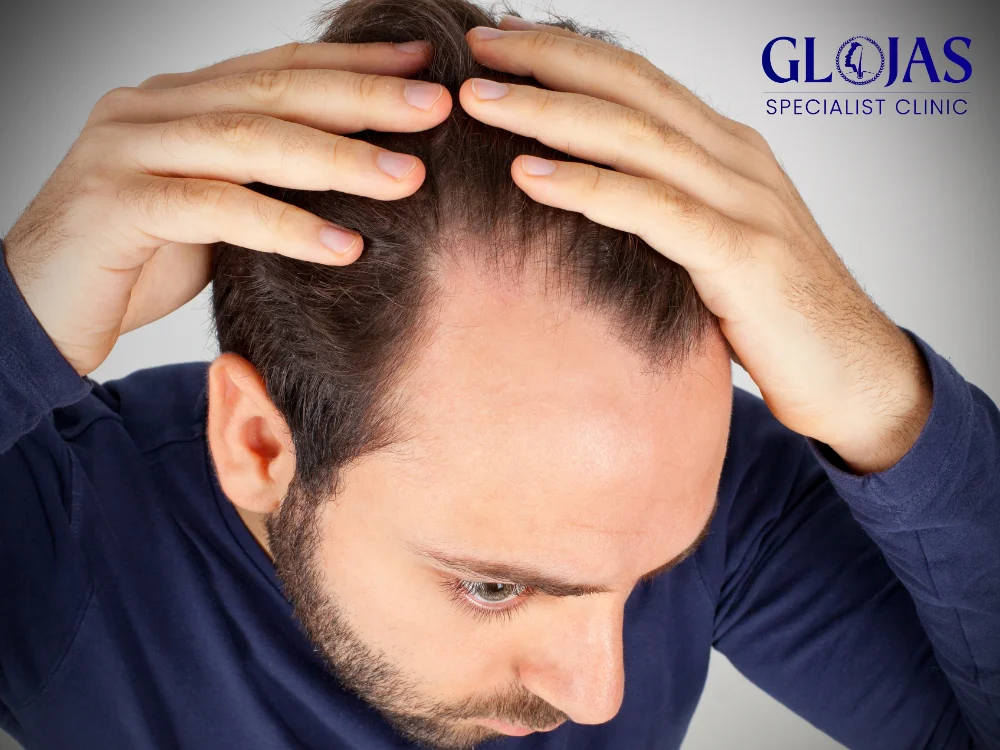
Hair loss, particularly along the hairline, can be distressing for both men and women. Thankfully, with advancements in medical technology, hairline transplant procedures have become a popular solution for restoring a natural-looking hairline. In this guide, we’ll explore everything you need to know about hairline transplants, from their benefits to what to expect during the process. What is a Hairline Implant? A hairline implant is a specialized hair restoration procedure that focuses on reconstructing or lowering the hairline. It typically involves harvesting hair follicles from areas where hair is dense (usually the back of the head) and implanting them along the hairline to create a fuller, more youthful appearance. This procedure can be an effective solution for those with receding hairlines, thin hair, or even those who simply want to lower their hairline for cosmetic reasons. Benefits of Hairline Implant 1. Natural-Looking Results One of the top reasons individuals opt for a hairline transplant is the ability to achieve natural-looking results. Skilled surgeons carefully place the transplanted follicles to mimic the natural direction and density of hair growth. The result is a seamless hairline that looks and feels entirely natural. With today’s advanced techniques, such as Follicular Unit Extraction (FUE), the precision and accuracy of follicle placement have drastically improved. Surgeons can tailor the hairline to suit the patient’s facial structure, enhancing both appearance and confidence. 2. Permanent Solution to Hair Loss Unlike other temporary hair restoration solutions, such as medications or wigs, a hairline transplant offers a permanent fix. Once the transplanted hair follicles have settled, they continue to grow just like natural hair. This permanence eliminates the need for ongoing treatments or frequent maintenance, making it a long-term investment in appearance and self-esteem. 3. Minimally Invasive Procedure A hairline transplant is a minimally invasive procedure, especially when using the FUE technique. This method involves extracting individual hair follicles rather than cutting out a strip of scalp, as is done in older techniques like Follicular Unit Transplantation (FUT). As a result, recovery time is shorter, and there is less visible scarring. Most patients are able to return to their normal activities within a few days, making it a convenient option for those with busy lifestyles. 4. Customizable Hairline Design Everyone’s hairline is unique, and with a hairline transplant, you have the opportunity to work closely with your surgeon to design a hairline that best suits your face. Surgeons take into consideration factors like facial symmetry, age, and the patient’s preferences to create a hairline that not only looks natural but also complements the individual’s appearance. For individuals seeking to restore their youthful look or those wanting a specific style, this level of customization is a major advantage. Whether you want a rounded, straight, or V-shaped hairline, the procedure can be tailored to meet your specific goals. 5. Boost in Confidence and Self-Esteem Hair loss can have a significant impact on self-esteem and confidence, particularly when it affects the hairline, which is highly visible. A hairline transplant can help restore confidence by providing a more youthful, vibrant appearance. Many patients report a significant improvement in their self-image after undergoing the procedure, feeling more comfortable in both personal and professional settings. The Hairline Implant Process Understanding the hairline transplant process can help alleviate any concerns or uncertainty about the procedure. Here’s a breakdown of what to expect: 1. Consultation and Planning The first step in the hairline transplant process is a consultation with your surgeon. During this meeting, your surgeon will assess your hair loss, discuss your desired results, and create a personalized plan for your transplant. The number of grafts required will be determined based on the extent of hair loss and the desired density of your new hairline. 2. Harvesting Donor Hair In an FUE procedure, hair follicles are individually harvested from the donor area, typically at the back or sides of the head. The follicles are carefully extracted using a tiny punch tool, which minimizes trauma to the surrounding tissue and reduces visible scarring. 3. Preparing the Hairline Once the donor follicles are harvested, the surgeon will make small incisions along the hairline where the new follicles will be implanted. This step is crucial for ensuring the transplanted hair grows in the natural direction and pattern, mimicking the existing hairline as closely as possible. 4. Implanting the Follicles The harvested follicles are then carefully implanted into the prepared sites along the hairline. Depending on the number of grafts needed, this part of the process can take several hours. However, patients are typically awake during the procedure and can watch TV, read, or listen to music. 5. Post-Procedure Care After the procedure, patients are given instructions for post-operative care. It’s common to experience some swelling or redness in the days following the surgery, but these symptoms usually subside quickly. The transplanted hair will shed within the first few weeks, but new growth will begin within a few months, with full results visible after about 9 to 12 months. How Much Does a Hairline Implant Cost? The cost of a hairline transplant can vary widely depending on several factors, including the number of grafts needed, the clinic’s location, and the surgeon’s expertise. On average, the cost ranges from $3,000 to $15,000. It’s important to remember that cheaper isn’t always better when it comes to surgical procedures—choosing an experienced, reputable surgeon is key to achieving the best results. FAQs on Hairline Implant 1. How long does a hairline implant take? A hairline transplant procedure typically takes between 4 to 8 hours, depending on the number of grafts being transplanted. 2. Is the procedure painful? Most patients experience minimal discomfort during the procedure. Local anesthesia is used to numb both the donor and recipient areas. 3. When will I see the results of my hairline implant? It can take 3 to 4 months for new hair growth to become noticeable, with full results appearing within 9 to 12 months. 4. Will the transplanted hair look
7 Proven Strategies to Manage Alopecia Areata Effectively
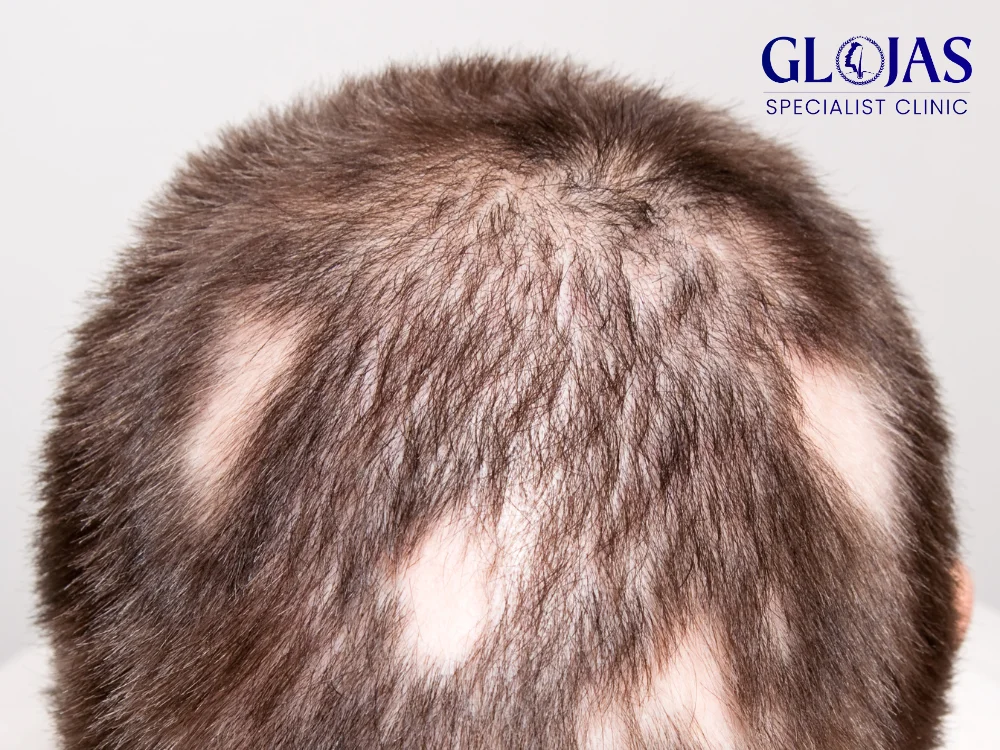
Alopecia areata is a common autoimmune condition that leads to hair loss in small, round patches on the scalp and other areas of the body. This unpredictable disorder affects millions worldwide, often leaving individuals seeking ways to manage and treat it effectively. Although alopecia areata can cause distress, several strategies and treatments have shown promise in controlling its progression and encouraging hair regrowth. In this article, we will explore everything you need to know about alopecia areata, including the causes, symptoms, and treatment options available. What is Alopecia Areata? Alopecia areata is an autoimmune disorder where the body’s immune system mistakenly attacks healthy hair follicles. This leads to the disruption of hair growth, resulting in patches of hair loss. The condition can affect anyone, regardless of age or gender, though it commonly develops in younger individuals. Alopecia areata is not contagious, nor is it life-threatening, but it can have significant emotional and psychological impacts due to visible hair loss. Types of Alopecia Areata There are different forms of alopecia areata that vary in severity: Alopecia areata (Patchy): Characterized by small, round patches of hair loss on the scalp or other parts of the body. Alopecia totalis: Complete hair loss across the entire scalp. Alopecia universalis: Hair loss occurs over the entire body, including the scalp, eyebrows, and eyelashes. Causes of Alopecia Areata The exact cause of alopecia areata is not fully understood, but it is believed to be a combination of genetic and environmental factors. Here are some potential causes: Genetics: Individuals with a family history of autoimmune disorders are more likely to develop alopecia areata. Autoimmune Response: The immune system mistakenly attacks the hair follicles, treating them as foreign invaders, leading to hair loss. Stress: Emotional or physical stress can trigger the onset or worsening of alopecia areata, although it is not a direct cause. Environmental Factors: Exposure to certain viruses or environmental toxins may contribute to the development of the condition. Symptoms of Alopecia Areata Alopecia areata typically manifests as sudden hair loss in small, round patches on the scalp, but the condition can affect any hair-bearing area of the body. Common symptoms include: Patchy Hair Loss: The most notable symptom is one or more round, smooth bald patches. Nail Changes: In some cases, individuals may experience changes in their fingernails or toenails, such as pitting or ridges. Regrowth and Relapse: Hair may grow back, but alopecia areata often has a cyclical nature, with periods of hair regrowth followed by further hair loss. Diagnosis of Alopecia Areata Alopecia areata is usually diagnosed through a clinical examination of the affected areas. In some cases, a biopsy or blood test may be required to rule out other conditions or determine if autoimmune factors are involved. Early diagnosis and intervention can be beneficial in managing the condition. Differentiating Alopecia Areata from Other Hair Loss Conditions Several conditions can mimic the symptoms of alopecia areata, such as: Androgenetic alopecia (male or female pattern baldness): Typically results in more diffuse hair thinning rather than patchy loss. Telogen effluvium: A temporary form of hair loss often triggered by stress or hormonal changes. Tinea capitis: A fungal infection that can cause bald patches with scaling and redness. 7 Proven Strategies to Manage Alopecia Areata Effectively While there is no cure for alopecia areata, many treatment options can help manage the condition and encourage hair regrowth. Here are seven proven strategies to consider: 1. Topical Corticosteroids One of the most common treatments for alopecia areata is topical corticosteroids. These medications help reduce inflammation around the hair follicles, allowing hair to regrow. Corticosteroid creams, ointments, or lotions are applied directly to the bald patches and are especially useful for small areas of hair loss. 2. Intralesional Corticosteroid Injections For individuals with more extensive hair loss, corticosteroid injections may be used. The injections are administered directly into the bald areas to promote hair regrowth. This treatment is often repeated every few weeks, depending on the severity of the hair loss. 3. Minoxidil (Rogaine) Minoxidil is a topical solution that can stimulate hair growth in individuals with alopecia areata. It is applied to the affected areas of the scalp and may promote hair regrowth in some cases. Minoxidil is generally more effective for smaller patches of hair loss. 4. Anthralin Anthralin is a topical medication commonly used to treat psoriasis but has also been effective in treating alopecia areata. It works by modifying the immune response in the skin, which can encourage hair regrowth in areas of baldness. 5. Immunotherapy Topical immunotherapy involves applying chemicals, such as diphencyprone (DPCP), to the scalp to trigger an allergic reaction. This reaction stimulates the immune system and can lead to hair regrowth over time. However, this treatment must be administered under medical supervision, as it can cause irritation and other side effects. 6. Platelet-Rich Plasma (PRP) Therapy PRP therapy is an emerging treatment for alopecia areata that involves drawing a small amount of the patient’s blood, processing it to concentrate the platelets, and then injecting the platelets into the scalp. This therapy is believed to promote hair regrowth by stimulating the hair follicles. 7. Lifestyle and Stress Management While stress is not a direct cause of alopecia areata, managing stress levels can help reduce the likelihood of flare-ups. Techniques such as meditation, yoga, and regular exercise can be beneficial for mental and emotional well-being, potentially improving the outcome of alopecia areata treatments. Living with Alopecia Areata Alopecia areata can be a challenging condition, both physically and emotionally. Individuals with alopecia areata often struggle with feelings of self-consciousness, especially if the hair loss is visible. Seeking support from friends, family, or support groups can help manage the emotional impact. Additionally, many people choose to wear wigs, scarves, or hats to cover bald patches and feel more confident in social situations. FAQs about Alopecia Areata 1. Can alopecia areata be cured? Currently, there is no cure for alopecia areata, but many treatments can help manage symptoms and promote hair regrowth. 2. Does alopecia
Kos Tanam Jambang: Panduan Lengkap dan Terperinci
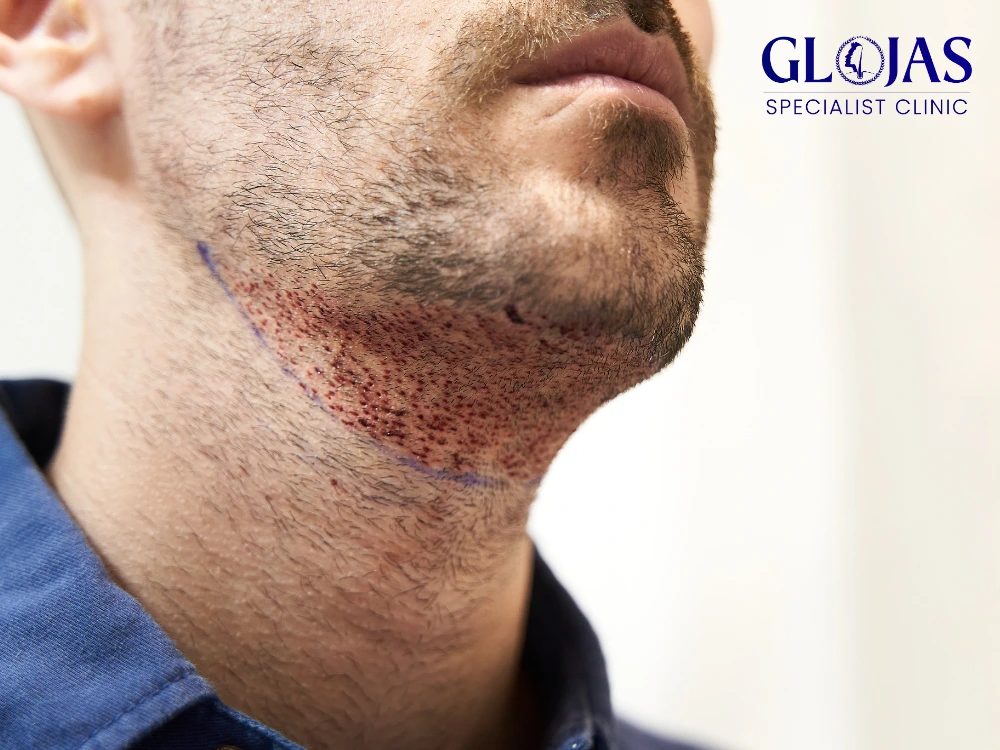
Tanam jambang adalah prosedur kosmetik yang semakin mendapat perhatian di kalangan lelaki di Malaysia. Banyak individu ingin memiliki jambang yang lebat dan kemas untuk meningkatkan penampilan mereka dan meningkatkan keyakinan diri. Namun, sebelum memutuskan untuk menjalani prosedur ini, adalah penting untuk memahami kos tanam jambang serta faktor-faktor yang mempengaruhi harga dan keputusan tersebut. Artikel ini akan mengupas secara terperinci mengenai kos tanam jambang, prosesnya, manfaat, dan aspek lain yang perlu dipertimbangkan. Apa Itu Tanam Jambang? Tanam jambang adalah prosedur pembedahan kosmetik yang melibatkan pemindahan folikel rambut dari kawasan donor ke kawasan wajah yang memerlukan jambang. Tujuan utama prosedur ini adalah untuk memberikan penampilan jambang yang lebih penuh dan semula jadi. Proses tanam jambang biasanya dilakukan menggunakan teknik seperti FUE (Follicular Unit Extraction) dan FUT (Follicular Unit Transplantation). Kedua-dua teknik ini mempunyai kelebihan dan kekurangan masing-masing. Faktor yang Mempengaruhi Kos Tanam Jambang Kos tanam jambang tidak tetap dan boleh berbeza-beza bergantung kepada beberapa faktor. Berikut adalah faktor-faktor utama yang mempengaruhi kos tanam jambang: Klinik dan Lokasi: Klinik di bandar-bandar besar seperti Kuala Lumpur atau Johor Bahru cenderung mengenakan kos yang lebih tinggi berbanding dengan klinik di kawasan luar bandar. Ini disebabkan oleh kos penyewaan, gaji kakitangan, dan perkhidmatan yang lebih premium di kawasan bandar. Pengalaman Pakar Bedah: Kos tanam jambang juga dipengaruhi oleh pengalaman dan reputasi pakar bedah. Pakar yang lebih berpengalaman dan terkenal biasanya mengenakan bayaran yang lebih tinggi kerana mereka memiliki kemahiran dan pengetahuan yang lebih baik dalam menjalankan prosedur ini. Teknik yang Digunakan: Kos tanam jambang berbeza mengikut teknik yang dipilih. Sebagai contoh, teknik FUE mungkin lebih mahal berbanding dengan teknik FUT kerana ia memerlukan proses yang lebih rumit dan memakan masa. Kualiti Bahan dan Alat: Klinik yang menggunakan teknologi dan alat terkini mungkin mengenakan kos yang lebih tinggi. Penggunaan bahan berkualiti tinggi juga akan mempengaruhi harga, tetapi ia juga menjamin hasil yang lebih baik. Jumlah Rambut yang Ditanam: Kos tanam jambang akan meningkat jika bilangan folikel rambut yang diperlukan adalah lebih banyak. Oleh itu, pesakit perlu berbincang dengan pakar tentang jumlah folikel yang diperlukan untuk mencapai hasil yang dikehendaki. Perkhidmatan Tambahan: Beberapa klinik menawarkan perkhidmatan tambahan seperti pemantauan pasca pembedahan dan rawatan susulan. Kos untuk perkhidmatan ini juga perlu dipertimbangkan. Kos Tanam Jambang di Malaysia Secara purata, kos tanam jambang di Malaysia boleh berkisar antara RM3,000 hingga RM10,000. Namun, angka ini hanyalah anggaran dan kos sebenar mungkin berbeza bergantung kepada faktor-faktor yang telah disebutkan. Mari kita lihat lebih dekat anggaran kos berdasarkan teknik dan keadaan. 1. Teknik FUE Teknik FUE adalah salah satu pilihan paling popular bagi mereka yang ingin melakukan tanam jambang. Dalam teknik ini, folikel rambut diambil satu persatu dari kawasan donor, biasanya di belakang kepala, dan ditanam di kawasan jambang yang dikehendaki. Kos tanam jambang menggunakan teknik FUE biasanya berkisar antara RM5,000 hingga RM10,000. Kelebihan teknik ini adalah ia tidak meninggalkan parut yang ketara dan hasilnya sering kelihatan lebih semula jadi. 2. Teknik FUT Teknik FUT, di mana jalur kulit yang mengandungi folikel rambut diambil dari kawasan donor, juga merupakan pilihan yang baik. Kos tanam jambang menggunakan teknik FUT biasanya lebih rendah, antara RM3,000 hingga RM7,000. Walau bagaimanapun, teknik ini mungkin meninggalkan parut yang lebih ketara berbanding teknik FUE. Ini adalah pertimbangan penting bagi mereka yang lebih mementingkan penampilan pasca pembedahan. 3. Klinik Terkenal vs. Klinik Tempatan Klinik yang terkenal dengan reputasi yang baik sering mengenakan kos tanam jambang yang lebih tinggi. Namun, mereka biasanya menawarkan perkhidmatan yang lebih baik dan hasil yang lebih memuaskan. Klinik tempatan atau baru mungkin menawarkan harga yang lebih rendah, tetapi penting untuk melakukan penyelidikan dan memastikan mereka mempunyai kelayakan dan pengalaman yang mencukupi. Pastikan anda membaca ulasan dan testimoni daripada pesakit terdahulu untuk menilai kualiti perkhidmatan yang ditawarkan. Proses Tanam Jambang Proses tanam jambang melibatkan beberapa langkah yang penting untuk mendapatkan hasil yang diinginkan. Berikut adalah langkah-langkah dalam prosedur ini: Konsultasi Awal: Pada sesi ini, pesakit akan menjalani perbincangan dengan pakar bedah mengenai harapan, keperluan, dan pilihan prosedur. Pakar akan menilai keadaan kulit dan rambut pesakit serta memberikan nasihat tentang teknik yang paling sesuai. Persiapan: Sebelum prosedur dimulakan, pesakit mungkin diminta untuk menjalani ujian darah dan mendapatkan arahan tertentu tentang penjagaan sebelum pembedahan. Ini termasuk pengelakan ubat-ubatan tertentu dan memastikan kawasan donor dalam keadaan baik. Prosedur Pembedahan: Prosedur pembedahan akan dilakukan di bawah anestesia tempatan atau sedasi. Pakar akan mengambil folikel rambut dari kawasan donor dan menanamnya ke kawasan jambang yang dikehendaki. Proses ini biasanya mengambil masa antara 4 hingga 8 jam, bergantung kepada jumlah folikel yang ditanam. Pemulihan: Selepas prosedur, pesakit akan diberikan arahan mengenai penjagaan pasca pembedahan. Ini termasuk cara membersihkan kawasan jambang dan ubat-ubatan yang perlu diambil untuk mengurangkan ketidakselesaan. Pemulihan biasanya mengambil masa antara beberapa hari hingga beberapa minggu. Manfaat Tanam Jambang Tanam jambang menawarkan pelbagai manfaat kepada pesakit yang memutuskan untuk menjalani prosedur ini. Antara manfaat tersebut adalah: Penampilan yang Lebih Menarik: Jambang yang lebat dan kemas dapat meningkatkan penampilan wajah lelaki, memberikan mereka keyakinan diri yang lebih tinggi. Dalam dunia yang semakin mementingkan penampilan, jambang yang baik boleh menjadi satu aset yang bernilai. Hasil yang Semula Jadi: Dengan teknik yang betul, hasil tanam jambang boleh kelihatan sangat semula jadi, sehingga sukar untuk membezakan antara rambut asli dan rambut yang ditanam. Ini membolehkan pesakit tampil yakin tanpa rasa malu. Jangka Hayat yang Panjang: Folikel rambut yang ditanam akan terus tumbuh seperti rambut biasa dan tidak memerlukan penjagaan yang tinggi. Dengan penjagaan yang betul, jambang yang ditanam dapat bertahan selama bertahun-tahun. Meningkatkan Keyakinan Diri: Banyak lelaki melaporkan peningkatan dalam keyakinan diri mereka selepas menjalani prosedur tanam jambang, yang boleh memberi kesan positif kepada kehidupan sosial dan profesional mereka. Keyakinan ini boleh mengubah cara mereka berinteraksi dengan orang lain. Kebebasan untuk Menentukan Gaya: Dengan jambang yang lebat, lelaki mempunyai lebih banyak pilihan dalam menentukan gaya penampilan. Mereka boleh mencuba pelbagai gaya jambang dan menyesuaikannya dengan keperibadian mereka. Pertimbangan Sebelum Tanam Jambang Sebelum membuat keputusan untuk menjalani tanam jambang, terdapat beberapa perkara yang perlu dipertimbangkan: Kos Tanam Jambang: Pertimbangkan anggaran kos tanam jambang dan sama ada ia sesuai dengan bajet anda. Pastikan anda tidak hanya
Fakta Mengejutkan: Biaya Tanam Rambut & Apakah Layak?

Tanam rambut adalah prosedur medis yang bertujuan untuk mengatasi kebotakan dengan cara memindahkan folikel rambut dari bagian kepala yang masih memiliki rambut ke area yang mengalami kerontokan atau kebotakan. Metode ini semakin populer di kalangan pria dan wanita yang ingin mendapatkan tampilan rambut lebih penuh dan alami. Namun, banyak orang bertanya-tanya: berapa biaya tanam rambut? Apakah prosedur ini benar-benar sepadan dengan hasilnya? Artikel ini akan membahas secara mendalam tentang biaya tanam rambut, faktor yang mempengaruhi harga, dan berbagai metode yang tersedia. Berapa Biaya Tanam Rambut? Biaya tanam rambut bisa sangat bervariasi tergantung beberapa faktor. Secara umum, harga prosedur ini berkisar antara Rp15 juta hingga Rp100 juta tergantung pada teknik yang digunakan, jumlah folikel yang ditanam, serta lokasi klinik. Berikut ini adalah estimasi biaya berdasarkan teknik yang digunakan: Metode Tanam Rambut Kisaran Harga FUE (Follicular Unit Extraction) Rp25 juta – Rp100 juta FUT (Follicular Unit Transplantation) Rp15 juta – Rp50 juta DHI (Direct Hair Implantation) Rp30 juta – Rp120 juta Faktor yang Mempengaruhi Biaya Tanam Rambut 1. Jumlah Folikel Rambut yang Ditanam Biaya tanam rambut biasanya dihitung berdasarkan jumlah folikel yang ditanam. Semakin banyak folikel yang ditransplantasikan, semakin mahal biayanya. ✔ Biaya per graft: Rp30.000 – Rp100.000 per folikel. 2. Teknik yang Digunakan FUE: Teknik ini lebih mahal karena minim bekas luka dan lebih alami. FUT: Metode ini lebih terjangkau tetapi meninggalkan bekas luka garis di kulit kepala. DHI: Prosedur terbaru dengan hasil yang lebih cepat, tetapi biayanya juga lebih tinggi. 3. Lokasi Klinik Klinik yang berlokasi di kota besar seperti Jakarta, Surabaya, dan Bandung cenderung memiliki harga lebih tinggi dibandingkan klinik di daerah kecil. ✔ Negara lain seperti Malaysia,Turki dan India menawarkan tanam rambut dengan harga lebih murah dibandingkan Indonesia. 4. Pengalaman Dokter Ahli bedah dengan pengalaman lebih tinggi biasanya mengenakan tarif lebih mahal karena keahlian mereka dalam memberikan hasil yang lebih alami. ✔ Dokter berpengalaman = Biaya lebih mahal✔ Dokter baru = Biaya lebih murah, tetapi risiko lebih tinggi 5. Biaya Tambahan Selain biaya utama, ada beberapa biaya tambahan yang perlu dipertimbangkan: Konsultasi awal: Rp500.000 – Rp2 juta Obat pascaoperasi: Rp1 juta – Rp3 juta Perawatan lanjutan: Rp2 juta – Rp10 juta Proses Tanam Rambut: Apa yang Harus Diketahui? Tanam rambut bukanlah prosedur sederhana dan membutuhkan beberapa tahap. Berikut adalah langkah-langkah yang biasanya dilakukan: 1. Konsultasi Awal Dokter akan melakukan analisis kondisi rambut dan menentukan jumlah folikel yang perlu ditransplantasikan. 2. Proses Pengambilan Folikel Folikel rambut diambil dari bagian kepala yang masih memiliki rambut sehat (biasanya bagian belakang kepala). 3. Penanaman Folikel Folikel yang telah diambil kemudian ditanamkan ke area yang mengalami kebotakan menggunakan teknik yang dipilih. 4. Pemulihan Pascaoperasi Pembengkakan ringan bisa terjadi selama beberapa hari. Pasien harus menghindari paparan sinar matahari langsung. Hasil akhir biasanya mulai terlihat dalam 6 hingga 12 bulan. Apakah Biaya Tanam Rambut Worth It? Banyak orang yang telah menjalani prosedur ini merasa puas dengan hasilnya karena rambut yang tumbuh kembali tampak alami dan permanen. Namun, sebelum memutuskan untuk menjalani tanam rambut, pertimbangkan hal berikut:✔ Apakah Anda siap dengan biaya yang cukup besar?✔ Apakah Anda memilih klinik yang memiliki reputasi baik?✔ Apakah Anda memahami bahwa hasilnya tidak instan? Jika jawaban Anda adalah ya, maka tanam rambut bisa menjadi solusi terbaik untuk mengatasi kebotakan dan meningkatkan rasa percaya diri Anda. Alternatif Selain Tanam Rambut Jika biaya tanam rambut terlalu mahal, beberapa alternatif lain bisa menjadi pilihan: 1. Minoxidil & Finasteride ✔ Minoxidil (Rp200.000 – Rp500.000/bulan) membantu merangsang pertumbuhan rambut.✔ Finasteride (Rp300.000 – Rp1 juta/bulan) mengurangi kerontokan rambut akibat hormon DHT. 2. PRP (Platelet-Rich Plasma) ✔ Terapi suntikan untuk merangsang pertumbuhan rambut.✔ Biaya sekitar Rp3 juta – Rp10 juta per sesi. 3. Hair Tattoo (Scalp Micropigmentation) ✔ Alternatif non-bedah untuk memberikan efek rambut yang lebih penuh.✔ Harga mulai dari Rp5 juta – Rp20 juta. Pertanyaan yang Sering Diajukan (FAQ) 1. Apakah hasil tanam rambut permanen?Ya, hasil tanam rambut biasanya permanen karena folikel yang ditransplantasikan berasal dari bagian kepala yang tidak rentan terhadap kebotakan. 2. Berapa lama proses pemulihan setelah tanam rambut?Pemulihan awal membutuhkan waktu 5-10 hari, tetapi hasil akhir baru terlihat setelah 6-12 bulan. 3. Apakah tanam rambut bisa gagal?Kemungkinan gagal selalu ada, terutama jika dilakukan oleh dokter yang kurang berpengalaman atau jika pasien tidak mengikuti prosedur pemulihan dengan benar. 4. Apakah tanam rambut sakit?Prosedur ini dilakukan dengan anestesi lokal, sehingga pasien tidak merasakan sakit saat operasi. Namun, sedikit ketidaknyamanan bisa dirasakan selama pemulihan. 5. Negara mana yang menawarkan biaya tanam rambut lebih murah?Turki, India, dan Thailand menawarkan tanam rambut dengan harga lebih terjangkau dibandingkan Indonesia, tetapi tetap pastikan klinik yang dipilih memiliki reputasi baik. Kesimpulan Biaya tanam rambut mungkin terasa mahal, tetapi jika dilakukan di tempat yang terpercaya dan dengan metode yang tepat, hasilnya bisa sangat memuaskan. Dengan memahami faktor yang mempengaruhi harga dan memilih solusi yang tepat, Anda bisa mendapatkan rambut yang lebih sehat dan percaya diri.
Kaedah Tanam Rambut: Panduan Lengkap untuk Anda
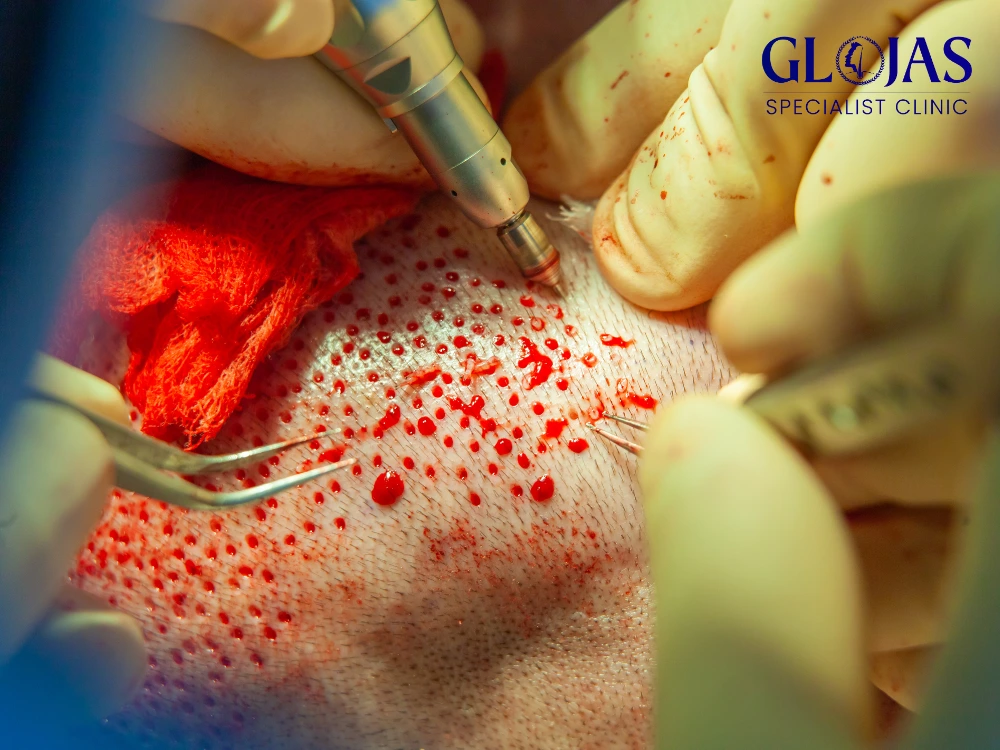
Keguguran rambut adalah masalah yang semakin meningkat di kalangan masyarakat hari ini, baik lelaki mahupun wanita. Ia boleh disebabkan oleh pelbagai faktor seperti genetik, perubahan hormon, tekanan, diet yang tidak seimbang, dan masalah kesihatan tertentu. Dalam usaha untuk mengatasi masalah ini, ramai yang mencari penyelesaian melalui kaedah tanam rambut (hair transplantation). Dalam artikel ini, kita akan membincangkan pelbagai kaedah tanam rambut yang ada, kelebihan dan kekurangan setiap kaedah, serta langkah-langkah penting yang perlu diambil sebelum dan selepas prosedur. Apa Itu Kaedah Tanam Rambut? Kaedah tanam rambut merujuk kepada prosedur pembedahan yang melibatkan pemindahan folikel rambut dari kawasan yang mempunyai rambut lebat (kawasan penderma) ke kawasan yang mengalami keguguran rambut (kawasan penerima). Dengan kemajuan teknologi dalam bidang perubatan estetik, terdapat beberapa kaedah yang berbeza untuk melakukan prosedur ini, di antaranya FUE (Follicular Unit Extraction) dan FUT (Follicular Unit Transplantation). Jenis-Jenis Kaedah Tanam Rambut 1. FUE (Follicular Unit Extraction) Kaedah FUE adalah salah satu kaedah tanam rambut yang paling banyak digunakan dan terkenal di seluruh dunia. Dalam kaedah ini, folikel rambut diambil satu persatu dari kawasan penderma menggunakan alat khas. Proses ini tidak memerlukan pembedahan besar, menjadikannya kurang invasif. Kelebihan Kaedah FUE: Tiada Parut Besar: Salah satu kelebihan utama FUE adalah bahawa ia tidak meninggalkan parut yang besar dan ketara seperti pada kaedah FUT. Pemulihan Cepat: Kebanyakan pesakit melaporkan bahawa mereka dapat kembali ke aktiviti harian dalam beberapa hari selepas prosedur. Hasil Semula Jadi: Kaedah ini memberikan hasil yang lebih semula jadi kerana setiap folikel ditanam secara individu. Kekurangan Kaedah FUE: Kos yang Lebih Tinggi: Kos rawatan menggunakan kaedah ini biasanya lebih tinggi berbanding FUT. Keterbatasan Bilangan Graft: Dalam satu sesi, jumlah graft yang boleh diambil mungkin terhad berbanding dengan kaedah lain. 2. FUT (Follicular Unit Transplantation) Kaedah FUT adalah teknik yang lebih tradisional di mana sekeping kulit yang mengandungi folikel rambut diambil dari kawasan penderma. Jalur kulit ini kemudiannya dipisahkan kepada unit folikel yang lebih kecil sebelum ditanam ke kawasan yang mengalami keguguran rambut. Kelebihan Kaedah FUT: Mampu Mengambil Lebih Banyak Graft: Kaedah ini membolehkan pengambilan jumlah graft yang lebih banyak dalam satu sesi. Kos yang Lebih Rendah: Kos FUT biasanya lebih rendah berbanding FUE, menjadikannya pilihan yang menarik bagi mereka yang mempunyai bajet terhad. Kekurangan Kaedah FUT: Parut yang Ketara: Salah satu kelemahan utama kaedah ini adalah bahawa ia boleh meninggalkan parut yang jelas di kawasan penderma. Masa Pemulihan yang Lebih Lama: Proses penyembuhan selepas pembedahan FUT mungkin memerlukan masa yang lebih lama berbanding FUE. 3. Kaedah Tanam Rambut Robotik Kaedah ini merupakan inovasi terkini dalam bidang tanam rambut di mana teknologi robotik digunakan untuk membantu dalam proses pengambilan dan penanaman folikel rambut. Sistem robotik membantu meningkatkan ketepatan dan kecekapan prosedur. Kelebihan Kaedah Robotik: Ketepatan Tinggi: Proses pengambilan folikel menjadi lebih tepat, mengurangkan risiko kerosakan pada folikel yang sihat. Prosedur yang Lebih Singkat: Dengan bantuan robot, prosedur ini boleh dilakukan dengan lebih cepat, menjimatkan masa pesakit dan pakar bedah. Kekurangan Kaedah Robotik: Kos Tinggi: Penggunaan teknologi robotik biasanya menjadikan kos prosedur lebih tinggi. Ketersediaan Terhad: Tidak semua pusat rawatan mempunyai peralatan ini, menjadikannya sukar diakses di beberapa kawasan. 4. Kaedah PRP (Platelet Rich Plasma) Walaupun PRP bukan kaedah tanam rambut secara langsung, ia sering digunakan sebagai sokongan untuk meningkatkan keberkesanan kaedah tanam rambut. Dalam prosedur ini, plasma kaya platelet diambil dari darah pesakit dan disuntik ke kawasan kepala untuk merangsang pertumbuhan rambut. Kelebihan Kaedah PRP: Meningkatkan Kualiti Rambut: PRP dapat membantu mempercepatkan pertumbuhan rambut dan meningkatkan ketumpatan serta ketebalan rambut. Prosedur Minim Invasif: Ia tidak memerlukan pembedahan dan biasanya dilakukan dalam masa yang singkat. Kekurangan Kaedah PRP: Hasil Berbeza-beza: Hasil dari prosedur PRP mungkin berbeza bagi setiap individu dan tidak semua orang akan mendapat keputusan yang sama. Kos Tambahan: Prosedur PRP biasanya memerlukan kos tambahan di luar kos kaedah tanam rambut. Faktor yang Mempengaruhi Pemilihan Kaedah Tanam Rambut Sebelum memutuskan kaedah tanam rambut yang sesuai, terdapat beberapa faktor yang perlu dipertimbangkan: 1. Tahap Keguguran Rambut Tahap keguguran rambut anda adalah faktor penting yang mempengaruhi jenis kaedah yang sesuai. Jika keguguran rambut anda teruk, kaedah yang membolehkan pengambilan banyak graft mungkin lebih sesuai untuk mendapatkan hasil yang diinginkan. 2. Kos Kos adalah salah satu faktor utama dalam membuat keputusan. Kaedah FUE mungkin lebih mahal, tetapi hasil yang diperoleh sering kali lebih memuaskan bagi sesetengah orang. Oleh itu, penting untuk membandingkan kos setiap kaedah dan memilih yang sesuai dengan bajet anda. 3. Harapan Hasil Setiap individu mempunyai harapan yang berbeza mengenai hasil tanam rambut. Berbincang dengan pakar bedah mengenai apa yang boleh dicapai melalui setiap kaedah tanam rambut adalah langkah penting untuk menetapkan harapan yang realistik. 4. Kesihatan Umum Keadaan kesihatan anda juga memainkan peranan dalam pemilihan kaedah. Jika anda mempunyai masalah kesihatan tertentu, adalah penting untuk berbincang dengan doktor mengenai kemungkinan risiko dan pilihan yang ada. Prosedur Kaedah Tanam Rambut 1. Konsultasi Awal Sebelum memulakan sebarang kaedah tanam rambut, pesakit perlu menjalani sesi konsultasi. Dalam sesi ini, pakar tanam rambut akan melakukan pemeriksaan ke atas keadaan rambut dan kulit kepala, serta membincangkan pilihan kaedah yang ada. Ini adalah peluang untuk pesakit mengemukakan sebarang soalan dan kebimbangan. 2. Proses Pembedahan Proses pembedahan untuk kaedah tanam rambut biasanya berlangsung antara 4 hingga 8 jam. Untuk kaedah FUE, folikel rambut akan diambil satu persatu, manakala untuk kaedah FUT, jalur kulit akan diambil sebelum dipisahkan kepada unit folikel. 3. Pemulihan Tempoh pemulihan berbeza mengikut kaedah yang dipilih. Dalam kes FUE, pemulihan biasanya lebih cepat dan pesakit boleh kembali ke aktiviti harian dalam beberapa hari. Sebaliknya, pemulihan selepas FUT mungkin mengambil masa lebih lama disebabkan parut yang perlu sembuh. 4. Hasil Akhir Hasil akhir kaedah tanam rambut biasanya akan terlihat setelah beberapa bulan. Folikel rambut yang ditanam akan mula tumbuh dan pesakit akan melihat peningkatan dalam ketebalan dan kepadatan rambut mereka. Perawatan Selepas Prosedur Setelah menjalani kaedah tanam rambut, adalah penting untuk mengikuti arahan pemulihan yang diberikan oleh pakar bedah. Ini termasuk: Mengelakkan Aktiviti Berat: Pesakit disarankan untuk menghindari aktiviti fizikal yang berat selama beberapa minggu selepas pembedahan. Menjaga Kebersihan Kulit Kepala: Menggunakan shampoo lembut dan menjaga kawasan yang ditanam adalah penting untuk mengelakkan jangkitan.
Implan Rambut: Solusi Rahasia Ampuh untuk Kebotakan dalam 7 Hari!
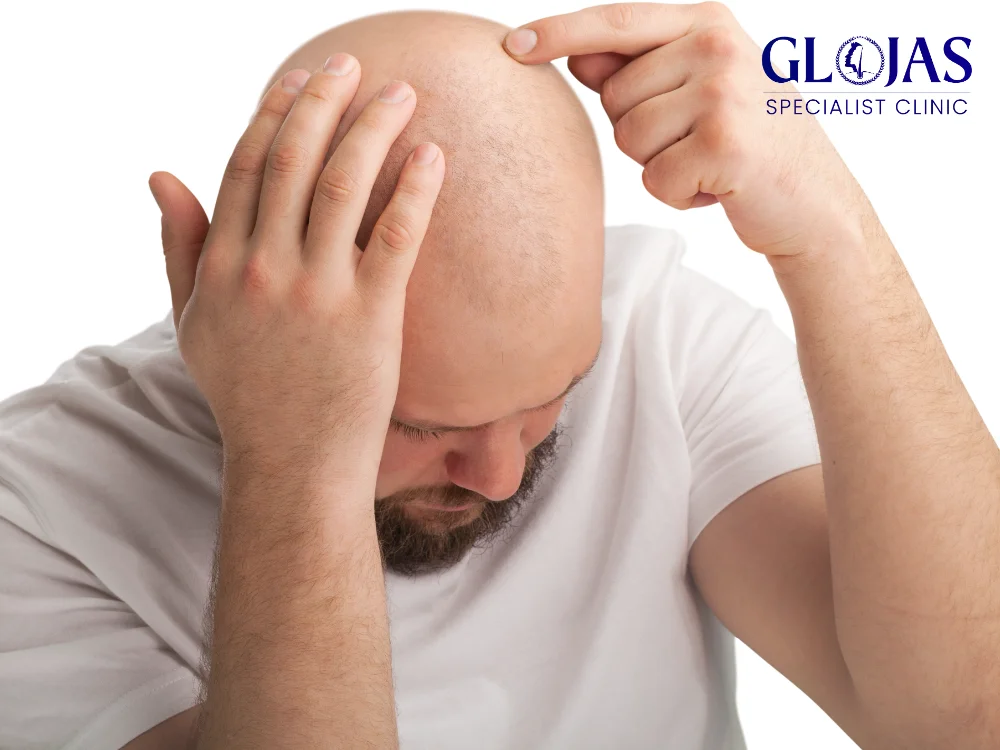
Implan rambut adalah prosedur medis yang bertujuan untuk menumbuhkan kembali rambut pada area yang mengalami kebotakan atau penipisan. Teknik ini dilakukan dengan cara memindahkan folikel rambut dari bagian tubuh yang memiliki rambut lebih tebal ke area yang membutuhkan. Di era modern ini, implan rambut semakin populer karena mampu memberikan hasil alami dan permanen. Tidak heran jika banyak orang yang memilih prosedur ini dibandingkan dengan perawatan rambut lainnya yang sering kali tidak memberikan hasil yang signifikan. Keunggulan Implan Rambut Dibandingkan Perawatan Lain Ada berbagai metode untuk mengatasi kebotakan, tetapi implan rambut menawarkan keunggulan yang lebih unggul dibandingkan metode lain seperti obat-obatan atau terapi laser. Berikut beberapa keunggulannya: 1. Hasil Permanen Berbeda dengan perawatan seperti minoxidil atau finasteride yang hanya bekerja selama digunakan, hasil implan rambut bersifat permanen karena folikel rambut yang ditransplantasikan akan terus tumbuh secara alami. 2. Tampilan Alami Prosedur ini menggunakan rambut asli pasien, sehingga hasilnya terlihat sangat alami dan tidak dapat dibedakan dari rambut asli yang tumbuh sebelumnya. 3. Minim Perawatan Pascaoperasi Setelah masa penyembuhan selesai, rambut yang ditanam akan tumbuh seperti biasa tanpa memerlukan perawatan khusus atau pemeliharaan yang rumit. 4. Bebas Efek Samping Obat Banyak obat penumbuh rambut yang memiliki efek samping seperti penurunan libido atau iritasi kulit kepala. Dengan implan rambut, risiko ini dapat diminimalkan. Metode Implan Rambut yang Populer Ada beberapa teknik implan rambut yang umum digunakan di klinik kecantikan dan pusat transplantasi rambut: 1. Follicular Unit Transplantation (FUT) Metode ini dilakukan dengan mengambil sepotong kulit kepala dari bagian belakang kepala yang memiliki banyak rambut. Setelah itu, folikel rambut diekstraksi dan ditanamkan di area yang mengalami kebotakan. Kelebihan:✅ Cocok untuk kasus kebotakan yang luas✅ Proses transplantasi lebih cepat Kekurangan:❌ Bekas luka kecil di belakang kepala❌ Masa pemulihan lebih lama 2. Follicular Unit Extraction (FUE) Pada metode ini, folikel rambut diambil satu per satu dari area donor dan ditanamkan langsung ke area yang membutuhkan. Kelebihan:✅ Tidak meninggalkan bekas luka besar✅ Waktu pemulihan lebih cepat Kekurangan:❌ Prosedur lebih lama dibandingkan FUT❌ Bisa lebih mahal 3. Direct Hair Implantation (DHI) DHI adalah versi yang lebih canggih dari FUE. Teknik ini menggunakan alat khusus yang memungkinkan dokter menanamkan rambut langsung tanpa membuat sayatan terlebih dahulu. Kelebihan:✅ Hasil lebih alami dengan kepadatan lebih tinggi✅ Masa pemulihan lebih cepat Kekurangan:❌ Biaya lebih mahal dibandingkan metode lain❌ Membutuhkan dokter yang sangat terampil Berapa Biaya Implan Rambut? Harga implan rambut bervariasi tergantung pada teknik yang digunakan, jumlah rambut yang ditanam, dan lokasi klinik. Berikut perkiraan biayanya: Metode Perkiraan Biaya FUT Rp 20 – 50 juta FUE Rp 30 – 80 juta DHI Rp 50 – 100 juta Faktor lain yang dapat mempengaruhi biaya meliputi pengalaman dokter, teknologi yang digunakan, serta fasilitas klinik tempat prosedur dilakukan. Efek Samping dan Risiko Implan Rambut Meskipun tergolong aman, prosedur ini tetap memiliki beberapa risiko, seperti: Pembengkakan dan kemerahan: Area yang diimplan bisa mengalami peradangan selama beberapa hari. Infeksi: Jika tidak dirawat dengan baik, luka bisa terinfeksi. Rambut rontok sementara (Shock Loss): Rambut yang ditransplantasi mungkin rontok dalam beberapa minggu pertama sebelum tumbuh kembali. Hasil tidak merata: Jika tidak dilakukan oleh ahli yang berpengalaman, hasilnya bisa terlihat tidak alami. Untuk mengurangi risiko ini, pastikan memilih klinik dengan reputasi baik dan mengikuti semua instruksi pascaoperasi. Bagaimana Cara Merawat Rambut Setelah Implan? Setelah menjalani prosedur, penting untuk mengikuti langkah-langkah perawatan berikut: Hindari mencuci rambut selama 48 jam pertama. Gunakan sampo ringan yang direkomendasikan oleh dokter. Jangan menggaruk atau menggosok area yang baru ditanam. Hindari olahraga berat selama 2 minggu pertama. Konsumsi makanan kaya protein dan vitamin untuk mempercepat pertumbuhan rambut. Dengan perawatan yang tepat, rambut yang ditanam akan mulai tumbuh dalam 3–6 bulan dan memberikan hasil penuh dalam 12 bulan. FAQ tentang Implan Rambut 1. Apakah implan rambut cocok untuk semua orang?Tidak semua orang bisa menjalani implan rambut. Kandidat yang ideal adalah mereka yang memiliki cukup donor rambut di bagian belakang kepala. 2. Apakah prosedur ini menyakitkan?Selama prosedur, pasien akan diberikan anestesi lokal sehingga tidak merasakan sakit. Namun, setelah efek anestesi hilang, mungkin ada sedikit ketidaknyamanan. 3. Berapa lama waktu pemulihan setelah implan rambut?Sebagian besar pasien bisa kembali beraktivitas normal dalam waktu 7–10 hari setelah prosedur. 4. Kapan hasil implan rambut mulai terlihat?Biasanya rambut mulai tumbuh dalam 3 bulan, dan hasil akhirnya bisa terlihat dalam 12 bulan. 5. Apakah implan rambut bisa gagal?Jika tidak dilakukan dengan benar atau pasien tidak mengikuti instruksi perawatan, ada kemungkinan folikel tidak bertahan dan rambut tidak tumbuh dengan baik. 6. Apakah hasil implan rambut terlihat alami?Ya, jika dilakukan oleh dokter yang berpengalaman, hasilnya akan terlihat sangat alami dan sulit dibedakan dari rambut asli.
10 Reasons Why Our Clinic Hair Services Guarantee Impressive Hair Restoration Results
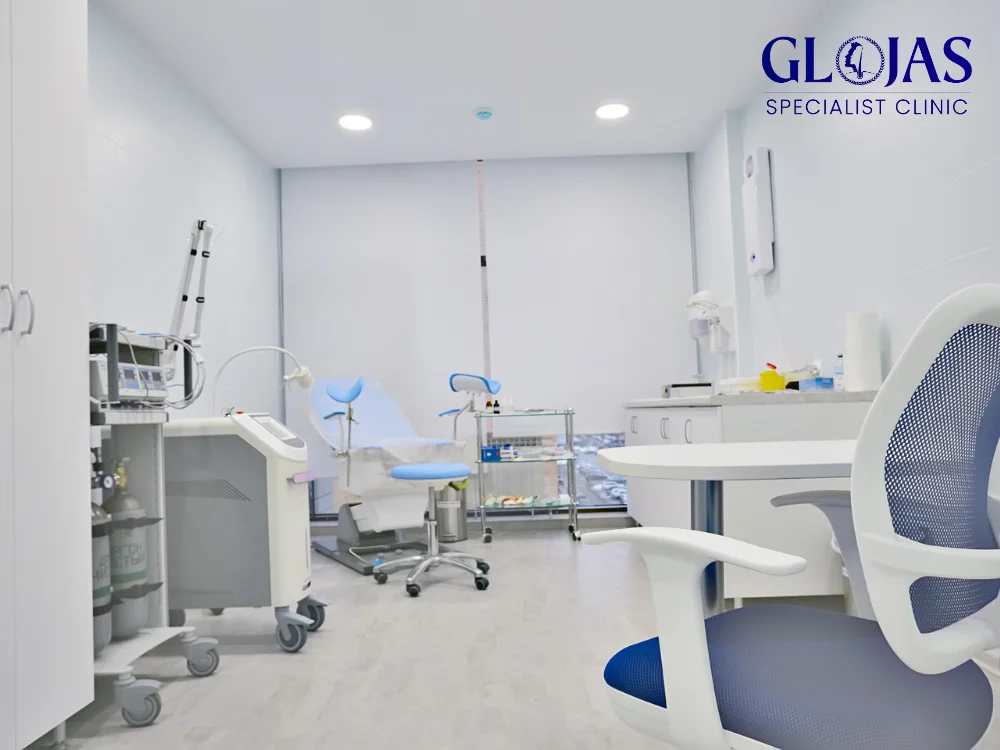
Hair loss is a common concern for both men and women, impacting confidence and self-esteem. Whether it’s due to genetics, aging, or other factors, hair loss can have a profound emotional effect. At our clinic hair facility, we specialize in cutting-edge hair transplant and hair loss treatments to help you regain not just your hair but your confidence too. Our hair transplant clinic offers advanced techniques tailored to each patient’s unique needs, ensuring a successful and natural-looking result. In this article, we’ll explore everything you need to know about clinic hair services, why our approach stands out, and how we can help you achieve impressive results in hair restoration. What is Clinic Hair Treatment? Clinic hair treatments refer to a variety of procedures and therapies aimed at addressing hair loss, thinning hair, and other scalp conditions. These treatments range from minimally invasive therapies to surgical hair transplants. Our clinic focuses on providing a comprehensive approach that combines the latest in medical science with personalized care to restore hair health and growth. The primary treatments we offer include: Hair Transplant Surgery: A surgical procedure to move hair follicles from one part of the body to thinning or balding areas. Non-Surgical Hair Loss Treatments: These include therapies such as PRP (Platelet-Rich Plasma) and laser therapy, designed to stimulate hair growth without the need for surgery. Why Choose Our Clinic Hair Services? When it comes to hair restoration, choosing the right clinic is critical. Here’s why our clinic hair services stand out from the competition: 1. Experienced and Certified Surgeons Our team of experts consists of board-certified specialists with years of experience in hair restoration. This ensures that every procedure is performed with precision, minimizing risks and maximizing results. 2. State-of-the-Art Technology We use the latest technologies and methods in the hair transplant industry, such as FUE (Follicular Unit Extraction) and DHI (Direct Hair Implantation), which offer faster recovery and more natural results. 3. Tailored Treatments Every patient is unique, and so are their hair restoration needs. Our specialists conduct an in-depth consultation to assess your hair loss pattern and recommend a personalized treatment plan that best suits your individual situation. 4. Minimally Invasive Techniques Our advanced techniques, such as FUE, ensure minimal scarring and quicker recovery times. We prioritize patient comfort, using methods that require fewer stitches and have shorter downtime compared to traditional methods. 5. Natural-Looking Results One of the most important aspects of a successful hair transplant is ensuring that the new hair blends seamlessly with the existing hair. Our clinic’s techniques ensure a natural hairline and gradual density improvement for a realistic look. 6. Comprehensive Aftercare Post-procedure care is essential for achieving optimal results. Our clinic hair services include a comprehensive aftercare program to ensure your new hair grows healthily and looks its best. Understanding Hair Transplant Options at Our Clinic There are various hair transplant options, and understanding the differences can help you make an informed decision. At our clinic hair facility, we offer the following main procedures: Follicular Unit Extraction (FUE) FUE is one of the most advanced hair transplant techniques available. It involves the removal of individual hair follicles from the donor area (typically the back of the head) and their placement in the areas experiencing hair loss. The benefits of FUE include: Minimal Scarring: As individual follicles are extracted, there is no linear scar, making it a popular choice. Natural Results: FUE allows for a precise placement of hair follicles, mimicking natural hair growth patterns. Direct Hair Implantation (DHI) DHI takes the FUE method a step further by using a specialized tool to implant the hair follicles directly into the scalp without creating pre-made incisions. This technique allows for better control over the angle, depth, and direction of hair placement, leading to even more natural-looking results. Non-Surgical Clinic Hair Treatments While hair transplants are the most effective solution for significant hair loss, some patients may benefit from non-surgical treatments that help stimulate hair growth and prevent further hair thinning. Platelet-Rich Plasma (PRP) Therapy PRP therapy involves drawing a small amount of the patient’s blood, processing it to extract the platelets, and injecting this plasma into the scalp. Platelets contain growth factors that stimulate hair follicles, promoting hair growth. Low-Level Laser Therapy (LLLT) LLLT is a non-invasive treatment that uses red light to stimulate hair follicles and improve hair density. This therapy is often used alongside other treatments to maximize hair regrowth potential. Our Clinic Hair Restoration Process From your initial consultation to your final follow-up appointment, we ensure a smooth and supportive experience: Consultation: During your first visit, we evaluate your hair loss pattern and discuss your medical history to determine the best treatment option. Personalized Plan: Based on the consultation, we create a tailored plan that could include surgical or non-surgical treatments, depending on your needs. Procedure: For surgical procedures, such as FUE or DHI, we use minimally invasive methods to ensure comfort and precision. Recovery: Post-treatment care is crucial. We provide detailed instructions and follow-up appointments to monitor your recovery and the growth of your new hair. Frequently Asked Questions FAQs 1. How long does a hair transplant take? A typical hair transplant procedure lasts between 4 to 8 hours, depending on the size of the treatment area and the number of grafts being transplanted. 2. Is hair transplant surgery painful? Hair transplant procedures are usually performed under local anesthesia, so the patient will not feel pain during the surgery. Post-operative discomfort is minimal and manageable with prescribed medications. 3. How soon can I see results from a hair transplant? Hair growth after a transplant can be seen within 3 to 6 months, but full results may take up to 12 to 18 months as the hair continues to grow and thicken. 4. Are the results permanent? Yes, hair transplant results are generally permanent as the transplanted follicles are resistant to the hormone that causes hair loss. However, maintenance treatments may be recommended to prevent further natural hair loss. 5. What is
Hair Transplant Bali: Perawatan Rambut Rontok Di Indonesia
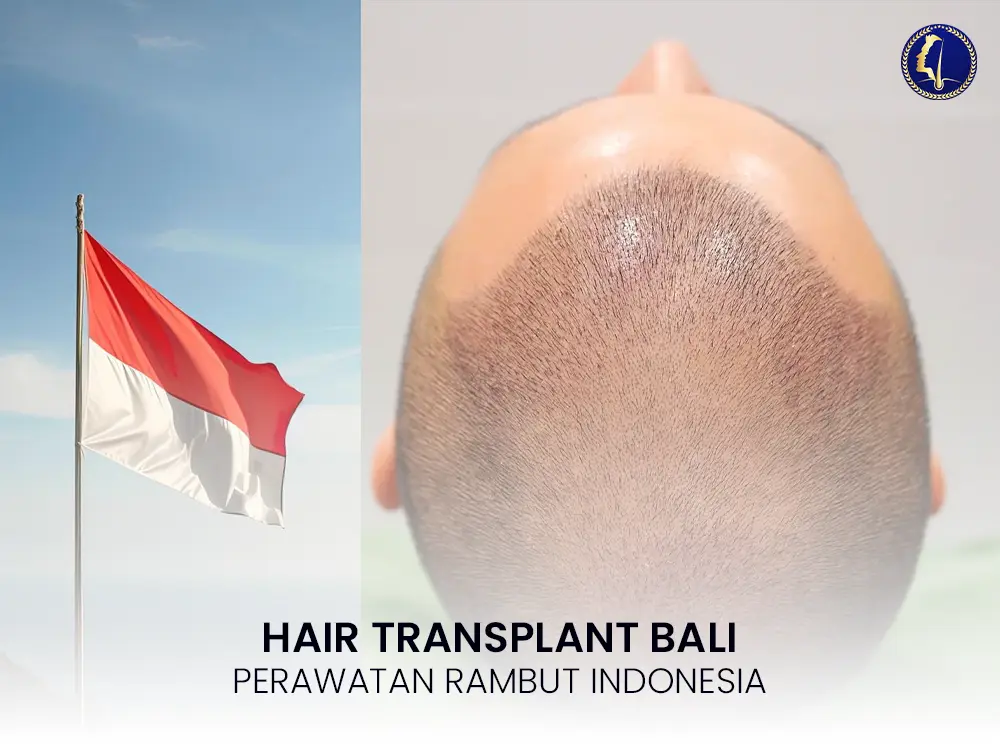
Hair Transplant Bali Hair Transplant Bali – Saat ini, semakin banyak orang mencari solusi efektif untuk mengatasi kerontokan rambut atau kebotakan. Pulau Bali tidak hanya terkenal dengan keindahan alam dan destinasi wisata, tetapi juga semakin dikenal sebagai pusat perawatan estetika rambut yang berkualitas internasional. Mengapa Hair Transplant Bali? Hair transplant Bali telah menarik perhatian banyak orang, baik dari dalam maupun luar negeri, karena menawarkan kombinasi sempurna antara layanan kesehatan kelas dunia dan suasana liburan yang menyenangkan. Banyak pasien internasional memilih Bali karena biaya perawatan yang lebih terjangkau dibandingkan negara lain seperti Australia, Amerika Serikat, atau Eropa. Mengenal Klinik Spesialis GLOJAS Salah satu klinik terkemuka yang menawarkan layanan hair transplant Bali adalah GLOJAS Specialist Clinic. Klinik ini dikenal karena tim medis yang berpengalaman, teknologi modern, serta hasil transplantasi rambut yang alami dan tahan lama. GLOJAS Specialist Clinic menggunakan teknik transplantasi rambut canggih seperti FUE (Follicular Unit Extraction), yang minim invasif dan memberikan hasil maksimal. Keunggulan GLOJAS Specialist Clinic: Tim Ahli Berpengalaman: Didukung oleh dokter spesialis yang telah bersertifikasi internasional. Teknologi Canggih: Menggunakan peralatan modern yang memastikan kenyamanan pasien. Hasil Alami: Teknik FUE menghasilkan rambut baru yang tumbuh secara alami dan harmonis dengan rambut asli pasien. Pelayanan Prima: Mengutamakan kenyamanan dan kepuasan pasien. Prosedur Hair Transplant di Bali Prosedur transplantasi rambut di Bali umumnya memakan waktu sekitar 4 hingga 8 jam, tergantung pada area dan jumlah graft yang dibutuhkan. Setelah prosedur selesai, pasien dapat langsung kembali beraktivitas normal dengan downtime yang sangat minimal. Manfaat Memilih Hair Transplant di Bali Harga Terjangkau: Lebih ekonomis dibandingkan negara-negara lain. Kualitas Internasional: Layanan medis yang berstandar internasional. Pengalaman Liburan: Sambil menjalani perawatan, pasien dapat menikmati suasana liburan di Bali. FAQ (Pertanyaan yang Sering Ditanyakan): 1. Apakah transplantasi rambut di GLOJAS Specialist Clinic aman? Ya, prosedur transplantasi rambut di GLOJAS sangat aman karena dilakukan oleh tenaga medis yang ahli dan menggunakan peralatan canggih. 2. Berapa lama hasil transplantasi rambut terlihat? Hasil transplantasi rambut biasanya mulai terlihat dalam 3 hingga 6 bulan, dengan hasil optimal sekitar 12 bulan. 3. Berapa biaya hair transplant di Bali? Biaya hair transplant di Bali bervariasi tergantung pada jumlah graft yang dibutuhkan, namun umumnya jauh lebih terjangkau dibanding negara lain. 4. Apakah transplantasi rambut menyakitkan? Pasien mungkin merasakan sedikit ketidaknyamanan, namun prosedur ini minim invasif dan tidak menimbulkan rasa sakit yang signifikan. 5. Berapa lama masa pemulihan setelah transplantasi rambut? Pasien biasanya bisa kembali beraktivitas normal dalam beberapa hari saja, dengan masa pemulihan penuh sekitar 1 hingga 2 minggu. Kesimpulan Memilih hair transplant Bali, terutama di GLOJAS Specialist Clinic, merupakan solusi terbaik bagi Anda yang menginginkan hasil optimal dengan pengalaman perawatan yang nyaman. Tidak hanya mendapatkan rambut sehat dan alami, tetapi Anda juga bisa menikmati keindahan pulau Bali sebagai bonus tambahan dalam proses pemulihan. View this post on Instagram A post shared by FUE Hair Transplant Malaysia | Pakar Tanam Rambut Kuala Lumpur (@fuehairtransplantmalaysia)